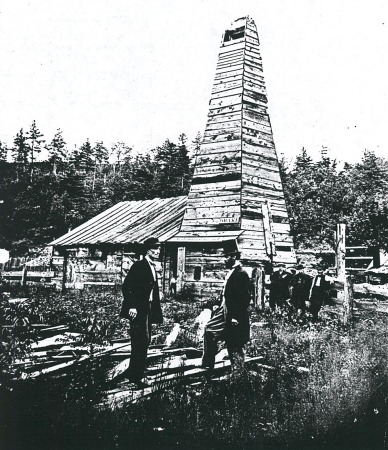
Col. Edwin L. Drake (in top hat) with his friend Peter Wilson, a druggist and investor in Drake's venture, in 1861 at the site of Drakes's discovery well near Titusville, Pennsylvania. Drake's discovery in 1859 was the first producing oil well in the United States. |
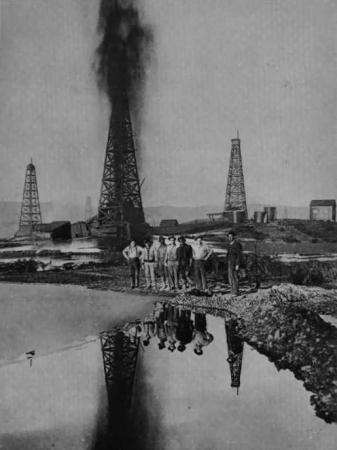
The Lakeview Gusher, which blew out in 1910 at Midway-Sunset oilfield near Taft, California. The Lakeview is the largest gusher the U.S. has ever seen, blowing more oil than either Spindletop in Texas, or the 2010 Gulf oil spill. |
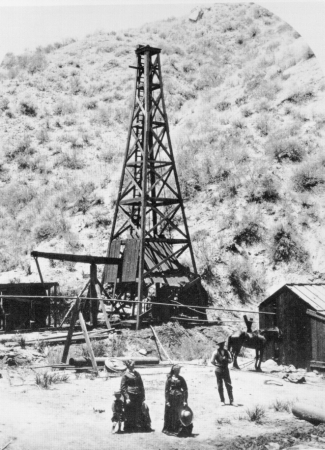
An 1877 photo by Carleton Watkins of the California Star Oil Works #4 well in Pico Canyon, the first commercial oil well in California. A stereo view by Watkins shows a diffent pose of the same well and people. |
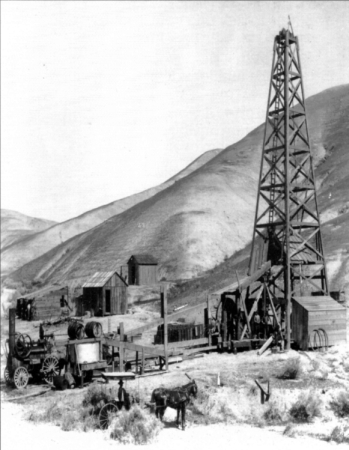
An early oil well in the late 1800s, near McKittrick, California. McKittrick was originally named Asphalto, due to its asphaltum mines, which prior to the 1906 Earthquake provided most of the asphalt paving for San Francisco. |
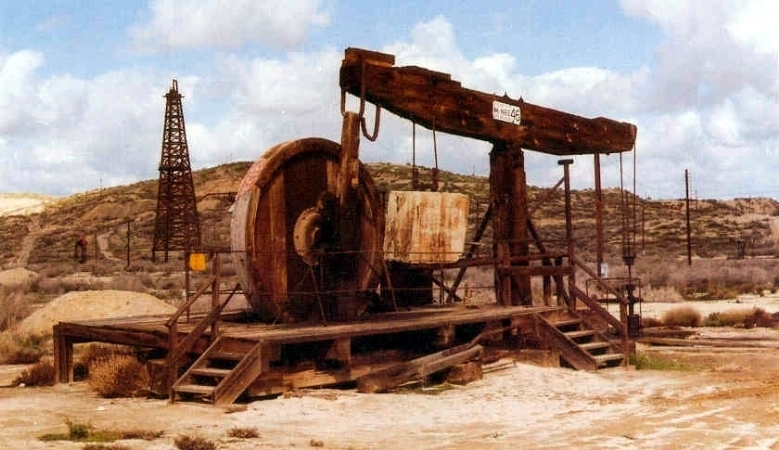
An old wooden pumping jack and derrick just off of Highway 119 near Taft, California. Chevron tore down the old derrick a few years ago after it was damaged in a wind storm, and they have since torn down the old pumping jack as well - both structures being victims of company lawyer paranoias on potential liability. Once upon a time there were dozens of old derricks in the vanishing outdoor oil museum of the San Joaquin Valley, but today there are only reproductions, as none of the originals remain standing. |
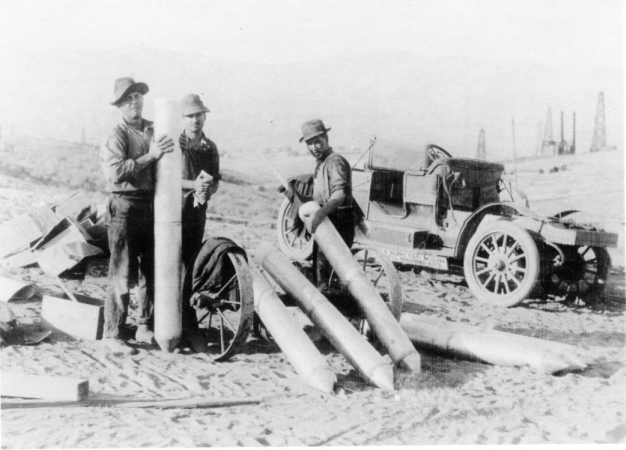
"Shooters" Ford Alexander, Clarence Hendershott, and Karl Kinley (l to r) at Midway-Sunset Field with dynamite-filled torpedos used to extinguish well fires. Karl in 1913 became the first man to use explosives to extinguish a well fire, and he and his son Myron used this technique in 1919 to extinguish the great gas fire that erupted when the Hay #7 well blew out at Elk Hills Field. Myron went on to teach the famous Red Adair the science of fighting oil well fires. |